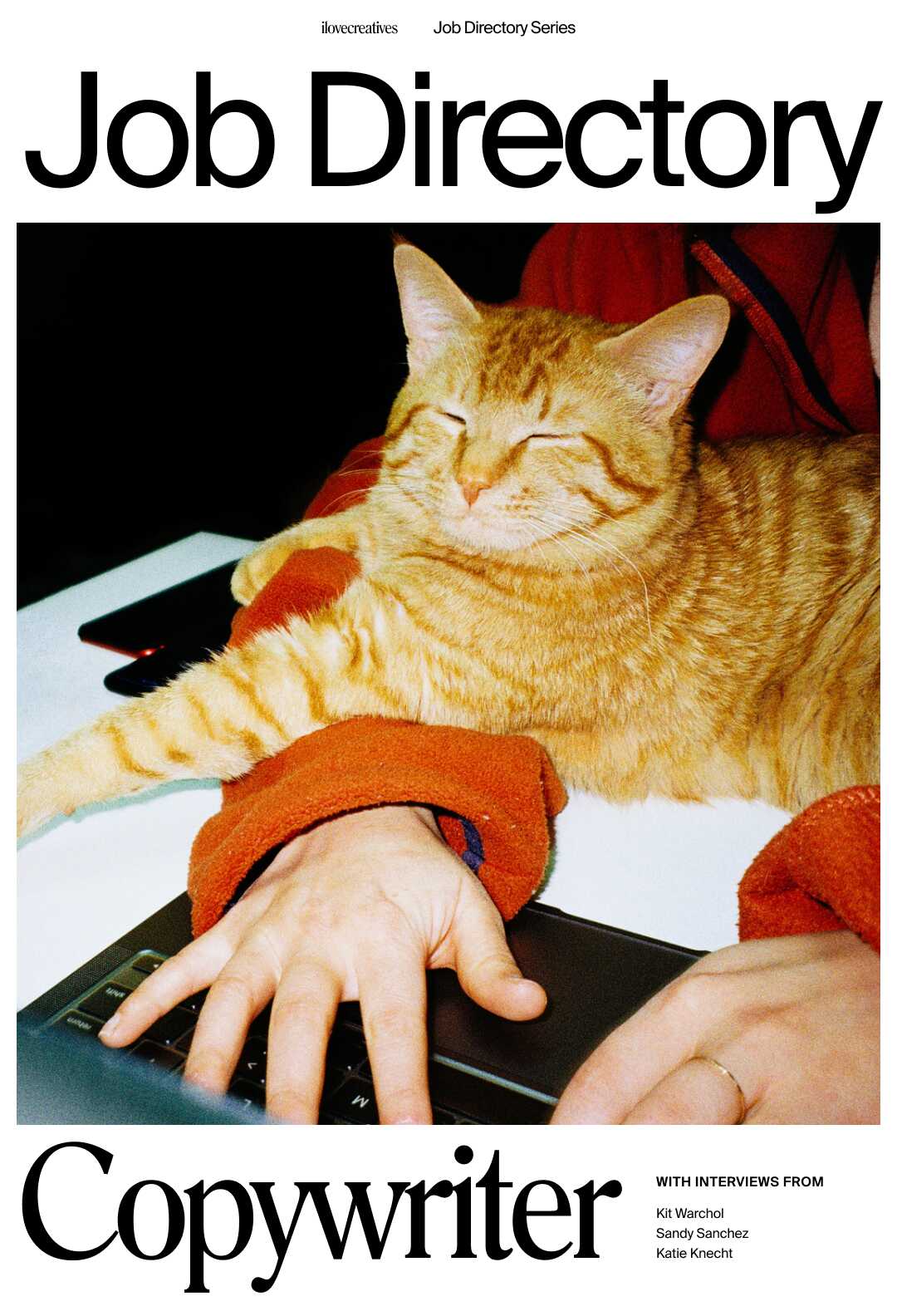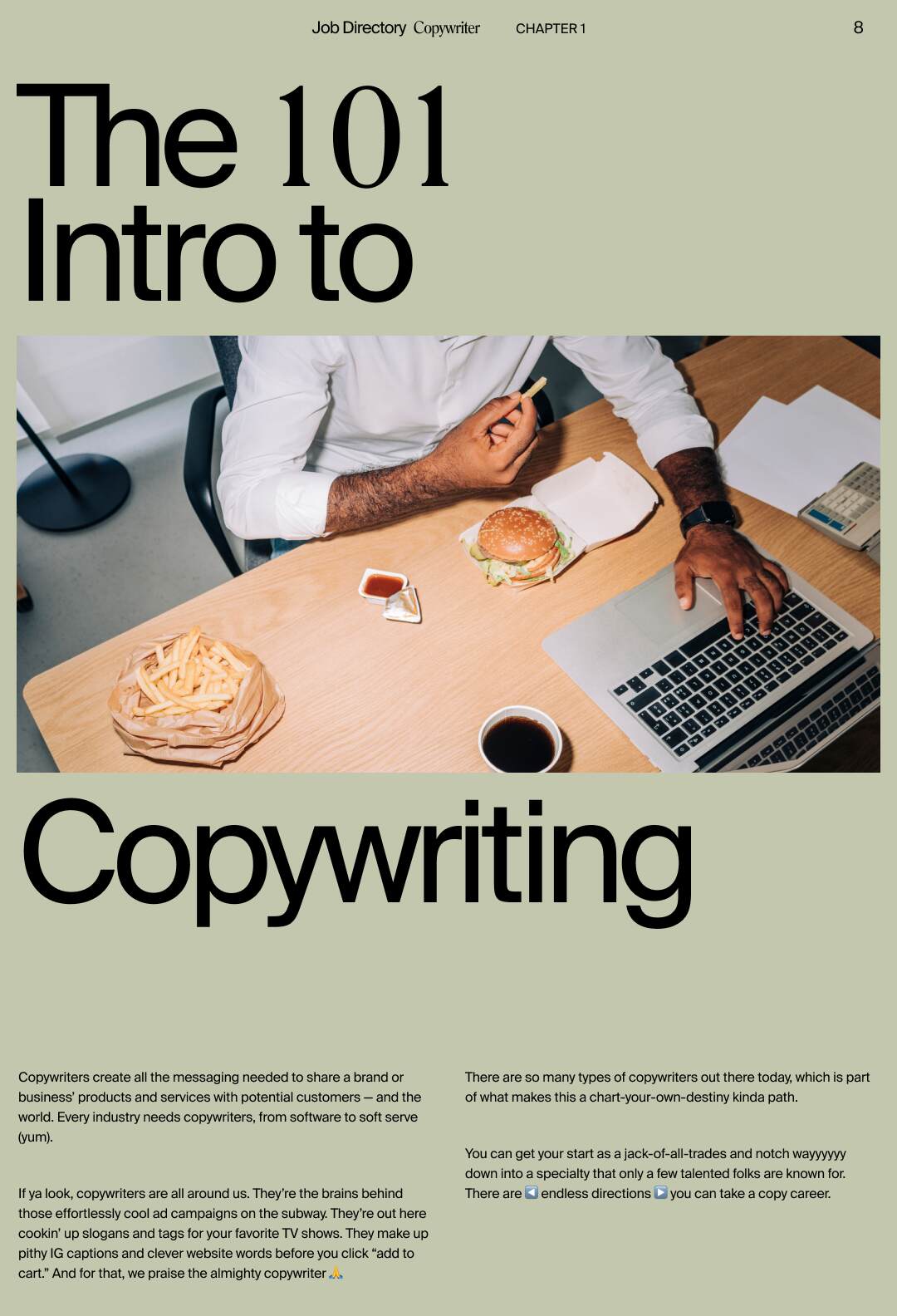ilovecreatives Job Directory: Copywriter
ilovecreatives Job Directory: Copywriter
Your field guide to jumpstart a career in copywriting.
Copywriters are ✨professional communicators ✨and storytelling is their superpower. They create all the messaging needed to share a brand or business’ products and services with potential customers — and the world.
Not sure you even want to get into copywriting? That’s where this roadmap to becoming a copywriter comes in. Big thanks to the recruiters at Creative People for giving us insight into the industry!
👇🏼 Enter your info below to download the Job Directory and subscribe to our Copywriter Course email list.
Who is this directory for?
Maybe you have a knack for words, but you’re not sure how to use your skills in a practical way. Let’s dip your toes into the cool ocean of copywriting with this handy-dandy Job Directory. Come on in, the water’s fine!
We’ll get into:

Wouldn’t it be great if you actually knew what you’d do all day in a job before you head down that particular career alleyway? We spoke with actual writers for their take on what it takes to become a professional copywriter for brands, either as an in-house creative or an independent solopreneur.
Career paths are long, winding, and full of pivots — intentional or not. Think of the Copywriter Job Directory✹ as a quick n’ dirty crash course in copywriting, so you can gather a ton of helpful info before you apply for jobs or commit to copy school.

What’s Inside:
Watercooler conversations with seasoned copywriters & recruiters
You’ll get wisdom straight from the horse’s mouth (do people still say that?) aka interviews with copywriters from all walks of life, including freelancers and in-house writers at scrappy startups and big-five agencies alike.
We also speak to recruiters from Creative People about what they look for in a portfolio.
A deep dive into salaries, job outlook and trends
DIY your career journey (it’s not just Jr. Copywriter ▶️ Creative Director, you know), learn how much money in-house writers should be making, and what to charge if you’re breaking into freelance writing.
How to make your career sustainable, not a flash in the pan
Pursuing a creative career has challenges that other industries don’t face, like how to tackle creative burnout as a writer, how to grow as a words person, or how to find — gasp! the word all copywriters dread — inspiration.





















